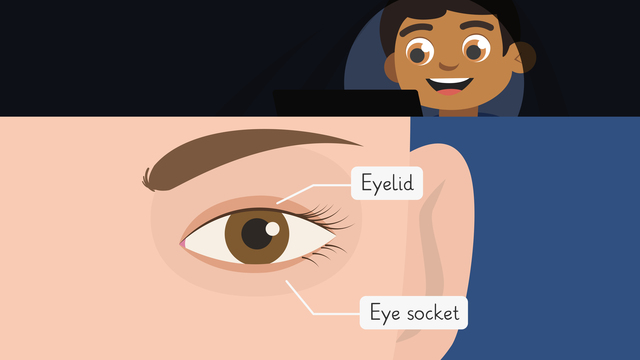My Body- Breathing and Oxygen Cycles


Basics on the topic My Body- Breathing and Oxygen Cycles
Take a deep breath a few more times and the balloon is ready. But how does the air you breathe actually get into the balloon? Let's find out together by learning about "My Body - Breathing and the Oxygen Cycle."
My Body- Breathing and Oxygen Cycles exercise
-
Find the reflex body functions.
HintsA reflex is something your body does without trying to. Have you ever started running or singing without trying to?
Doing something intentional, such as moving your finger or putting your hand up, is NOT a reflex.
What does your body do to stay alive? This is a reflex.
SolutionBreathing, your heartbeat and blinking your eyes are things your body does without thinking about it. These are reflexes.
-
True or false?
HintsThe pharynx is located at the back of your throat behind your nose and mouth openings.
The bronchial tubes are located deep in the chest in the lungs, far from your nose and mouth openings.
SolutionTRUE
- When you breathe, your body takes in and uses oxygen and sends out carbon dioxide.
- When you breathe, your body pulls in air by expanding your chest. When your chest goes down again, the air is pushed back out of the body.
- Air first enters the body through the mouth and nose, not the bronchial tubes.
- Oxygen and carbon dioxide are exchanged in the air sacs, not the pharynx.
-
Which body parts are involved in breathing?
HintsThe pharynx is located at the back of your throat behind your nose and mouth.
The trachea is located in your throat and feels bumpy.
The bronchial tubes are located in your chest.
The air sacs are located at the ends of the bronchial tubes.
SolutionHere are the correct pairs.
-
Show the path of breath through the body.
HintsYour breath begins at your nose and mouth and ends in your lungs. What is connected to your nose and mouth? This is the second step.
Your breath begins at your nose and mouth and ends in your lungs. What is located in your chest? These are the fourth and fifth steps.
Solution- When you breathe, air first enters the body though the nose and mouth.
- Air then passes into the pharynx.
- Next, the air flows through the trachea.
- Next, air enters the bronchial tubes.
- Finally, the air reaches the small air sacs, where the oxygen and carbon dioxide can be exchanged.
-
Where are oxygen and carbon dioxide exchanged?
HintsThe body part which meets the bloodstream is the last body part in the breathing cycle.
This organ is very small and looks similar to a cluster of grapes.
SolutionOxygen and carbon dioxide are exchanged in the air sacs in your lungs.
-
Complete the paragraph.
HintsShown are all of the different body parts which are part of the breathing cycle.
Where does air come into your body? This comes first.
Use the word bank above to help you remember the correct spelling.
SolutionWhen you breathe, the air first comes into the body through the nose and mouth. After this, the air passes into the pharynx. The air then passes through the trachea. You can feel this body part with your fingers if you gently touch your throat. After this, the air passes into the bronchial tubes, and finally down into the air sacs where oxygen and carbon dioxide can be exchanged.


 Do you want to learn faster and more easily?
Do you want to learn faster and more easily?














